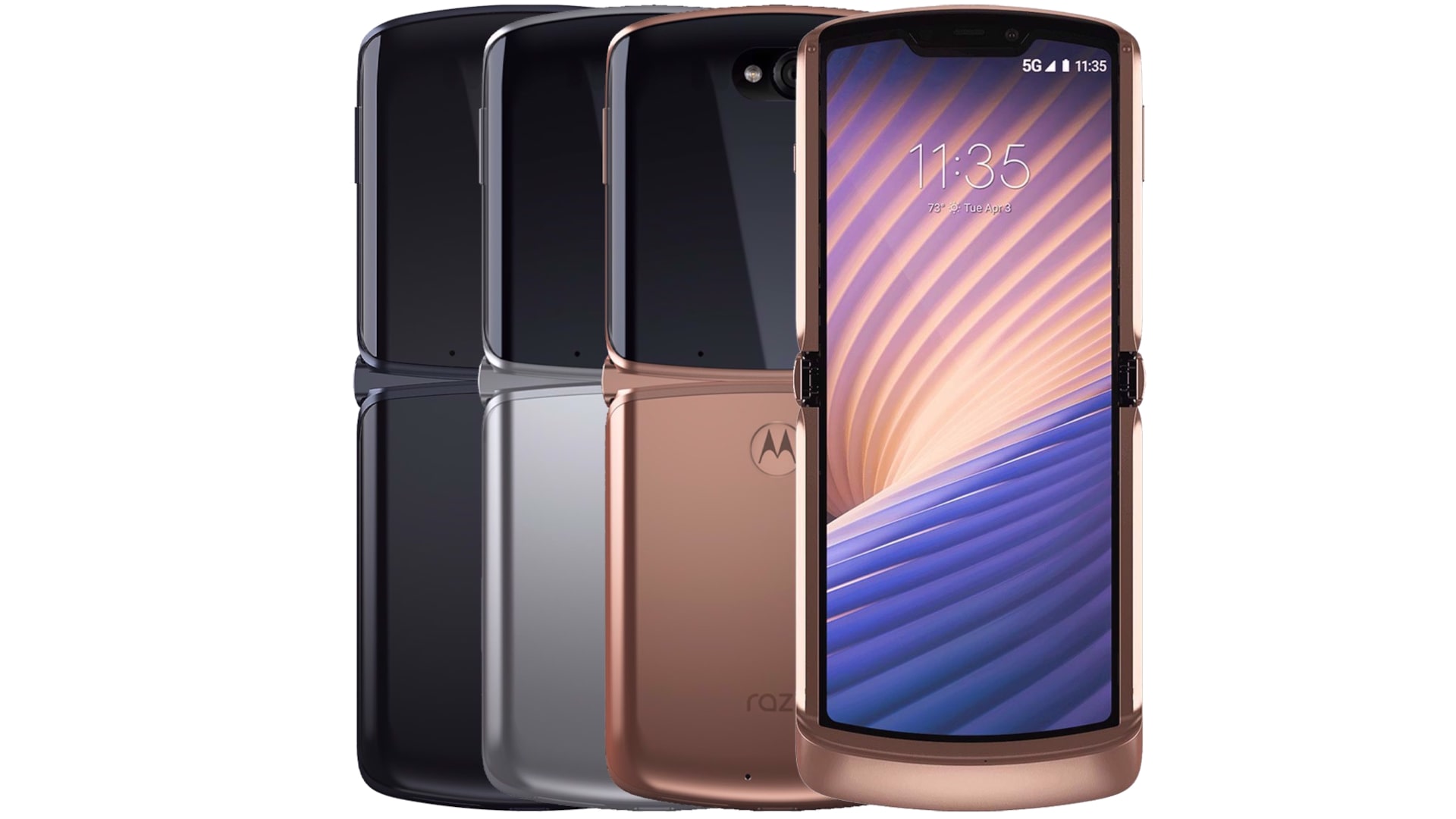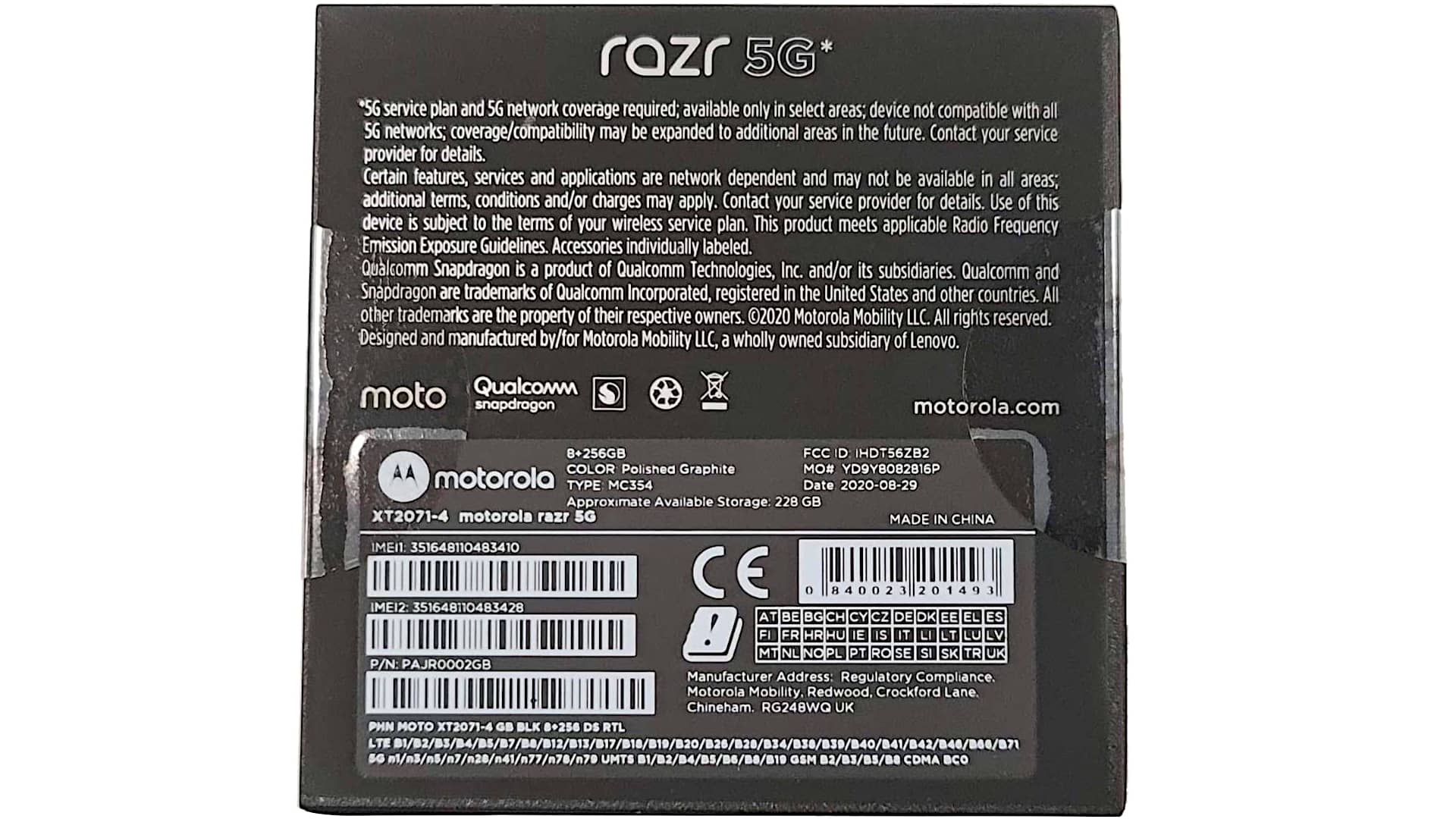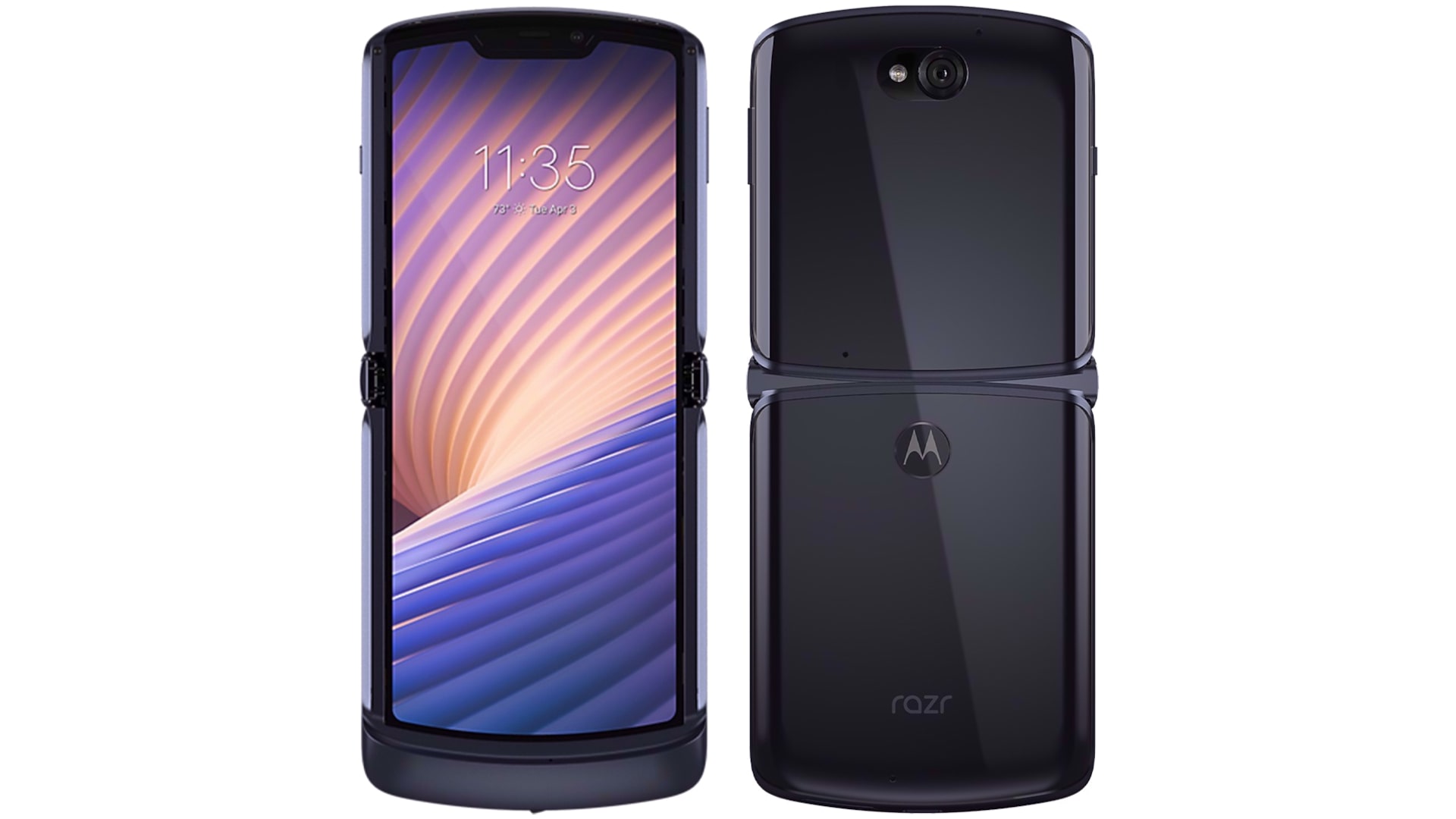In this article, I give you my Motorola Razr 5G Gen 2 review with specs included. In the tumultuous landscape of 2020, amidst its challenges and uncertainties, the realm of smartphones experienced a notable highlight with the emergence of the Moto Razr 5G. This device, marking the second generation of its lineage, debuted in October, following swiftly on the heels of its predecessor, which graced the market merely in February of the same year. Indeed, the timeline seems stretched, as if eons have passed, yet the evolution of this iconic device is palpable.
Reflecting on the genesis of this iteration, one might recall the cautious reception that greeted its antecedent. The first-generation Moto Razr 5G elicited mixed reactions, and indeed, I refrained from a comprehensive review due to reservations regarding its structural integrity.

An encounter with the device at retail outlets revealed a disconcerting fragility, as if the inner display hung precariously, akin to delicate cellophane, susceptible to the slightest misstep. Within a mere day, the displays at multiple stores succumbed to mishaps, their delicate veneers shattered. It was a grim portent, dissuading any immediate investment or endorsement.
Compounding the skepticism were comparative considerations. The Samsung Galaxy Z Flip, a close competitor in the nascent realm of foldable devices, boasted superior specifications at a comparable price point. Thus, the narrative appeared clear: the Moto Razr 5G languished in the shadows, overshadowed by more promising contenders. However, fate held a surprising twist, as the Moto Razr 5G Gen 2 emerged, bearing tidings of redemption and refinement.
The transformation is conspicuous, a testament to Motorola’s dedication to improvement. Enhanced durability stands as the foremost hallmark of the Moto Razr 5G Gen 2, a resolute departure from its predecessor’s fragile disposition. The inner display, once vulnerable to mishandling, now exhibits a sturdier mounting, instilling confidence in its resilience. This pivotal enhancement lays the groundwork for a reevaluation, beckoning scrutiny of the device’s newfound merits.

Pricing, a perennial point of contention in the realm of foldable smartphones, remains a topic of discussion. Retailing at $1199 from authorized channels such as Moto Direct, Best Buy, or Amazon in the United States, the Moto Razr 5G Gen 2 presents itself as a premium offering.
However, carriers may levy a higher price of $1399, albeit supplemented with enticing trade-in deals. The discrepancy between listed and actual prices invites speculation, hinting at a potential recalibration in the competitive landscape. Nonetheless, even at the lower end of the spectrum, the Moto Razr 5G Gen 2 remains a considerable investment, catering to discerning consumers with a penchant for cutting-edge technology.
The discourse on affordability invariably draws divergent perspectives. While some advocate for budget-consciousness, balking at the notion of exorbitant expenditures, others acknowledge the inherent costliness of innovative technologies. In the realm of foldable displays, where pioneering advancements intersect with premium materials and intricate engineering, pricing reflects the inherent complexities of the endeavor. The Moto Razr 5G Gen 2, with its foldable form factor and dual-display configuration, epitomizes this convergence of innovation and expense.
Dispelling misconceptions, the Moto Razr 5G Gen 2 elucidates its dual-display functionality. Beyond the iconic foldable interior, an outer display adorns the device, offering users additional utility and convenience. The outer display, boasting an 800 by 600-pixel resolution and a 4:3 aspect ratio, is fashioned from glass OLED technology, ensconced in Gorilla Glass 5 for added resilience.
Moreover, enhancements in functionality augment the user experience, transcending the confines of conventional notification management. In lieu of mere swiping gestures, users can now tap notifications to expand and explore their contents, a subtle yet significant refinement in usability.
The Motorola Razr 5G Gen 2 presents users with a newfound versatility, allowing for the utilization of any desired application on its external display. While the practicality of viewing YouTube videos on an 800×600-pixel screen may be limited, this feature proves remarkably convenient for various tasks.
Take, for instance, the management of grocery lists through applications like AnyList, where the ability to effortlessly scroll through items without opening the device serves as a boon, particularly in light of hygiene concerns prevalent in the era of COVID-19. The ease of cleaning the outer display adds to its appeal, facilitating seamless interaction while minimizing the need for extensive device handling.
Moreover, the expanded functionality extends to communication tasks such as responding to text messages and emails, offering a streamlined experience that transcends conventional notification management. The inclusion of a retro game further enhances the device’s allure, showcasing its adaptability to diverse user preferences. While some may opt for casual gaming sessions on the external display, others may push the boundaries by indulging in more intensive gaming experiences, such as PUBG, underscoring the versatility of the device.
In juxtaposition to its competitor, the Samsung Galaxy Z Flip 5G, the Motorola Razr 5G Gen 2 distinguishes itself through its comprehensive external display functionality. While the Galaxy Z Flip offers a minimalistic notification strip on its exterior, limiting interaction to basic notifications, the Moto Razr provides a more immersive experience, enabling users to engage with notifications, messages, and emails without the need to unfold the device. This feature serves as a significant selling point, offsetting any disparities in specifications between the two devices.
Speaking of specifications, the Motorola Razr 5G Gen 2 houses the Qualcomm Snapdragon 765G chipset, a notable inclusion in the realm of mid-range and upper mid-range smartphones. While not as formidable as the Snapdragon 865 Plus processor found in its counterpart, the Moto Razr compensates through optimized software and tailored enhancements, ensuring a seamless user experience.
Motorola’s expertise in optimizing performance for mid-range devices is evident, mitigating any perceived shortcomings in raw processing power. Backed by 8GB of RAM and 256GB of internal storage, the device offers ample memory for multitasking and content storage, albeit lacking expandable storage options commonly found in traditional smartphones.
The absence of wireless charging represents a notable drawback, particularly in comparison to the Galaxy Z Flip’s inclusion of this feature. Wireless charging has become increasingly popular among consumers, offering added convenience and flexibility in device charging. The omission of this capability may deter potential users accustomed to the convenience of wireless charging solutions.
Furthermore, the lack of a microSD card slot limits options for expanding storage capacity, necessitating prudent management of available onboard storage. While the absence of these features may not be prohibitive for all users, their inclusion could have enhanced the device’s appeal and competitiveness in the market.
Apologies for reiterating the point, but it’s crucial to acknowledge that the primary competitor in the folding phone arena is the Samsung Galaxy Z Flip. With that said, let’s delve into the details of the Motorola Razr 5G Gen 2. While it omits a headphone jack, Motorola provides users with a USB-C to 3.5-millimeter adapter, catering to those who still value wired audio connectivity. The device supports Moto’s Turbo Charging, delivering a standard 15-watt charging capability, keeping pace with contemporary charging standards.
Moving on to the camera enhancements, Motorola strives to elevate its imaging capabilities, although it may not claim the title of the best camera system in the market. Externally, the device boasts a 48-megapixel camera utilizing quad-pixel binning technology, resulting in a 12-megapixel output.
Employing a Bayer-type sensor and featuring a fast f/1.7 lens, this single-camera setup aims to deliver satisfactory imaging performance. Internally, a 20-megapixel camera, employing similar quad-pixel binning technology, caters to the needs of selfie enthusiasts and facilitates high-resolution self-portraits.
Video recording capabilities include the ability to capture 4K video at up to 30 frames per second on the outer screen, complemented by optical image stabilization (OIS) on the inner screen. The outer screen’s utility extends beyond conventional usage, enabling users to leverage it for various creative and practical purposes.
For instance, users can preview images or videos in real-time on the outer display, providing immediate feedback or facilitating self-portrait photography by utilizing the higher-resolution camera sensor. Additionally, a playful feature displays happy smiley faces on the screen, potentially eliciting cheerful responses from subjects during photography sessions.
While the camera improvements are commendable, they may not rival the imaging prowess of flagship devices from industry giants like Apple and Samsung. Some users may notice shortcomings in image quality, particularly in scenarios characterized by high contrast or intense sunlight. The color reproduction may appear muted, and there could be instances where the default auto HDR feature overly accentuates details at the expense of contrast. Nevertheless, Motorola could potentially address these concerns through software updates, although the likelihood of such enhancements remains uncertain.
Despite potential limitations in imaging performance, the Motorola Razr 5G Gen 2’s camera setup caters to the needs of average users, delivering satisfactory results for everyday photography and video conferencing purposes. The device’s internal camera proves adequate for tasks such as video calls, selfies, and casual photography, further enhancing its versatility and appeal to a broad user base. While it may not emerge as the ultimate choice for photography enthusiasts seeking top-tier imaging capabilities, the device strikes a balance between functionality, innovation, and affordability within the foldable smartphone segment.
For photography enthusiasts, particularly those with discerning tastes, the camera capabilities of the Motorola Razr 5G Gen 2 may not meet the highest standards. Even its primary competitor, the Samsung Galaxy Z Flip, falls short in terms of camera performance, akin to the Samsung S10 series. To truly elevate the photography experience in the realm of foldable phones, one would need to explore options like the Samsung Galaxy Z Fold 2, featuring a triple-camera array that sets a higher benchmark for imaging excellence.
Returning to the focal point of our discussion, let’s revisit the standout feature of the Motorola Razr 5G Gen 2: its external display. This display, characterized by its sheer awesomeness, is crafted from plastic OLED technology, diverging from Samsung’s employment of ultra-thin glass.
Surprisingly, there’s a silver lining to this deviation. While ultra-thin glass may offer a more premium feel, it also presents a vulnerability to shattering upon impact. In contrast, the plastic display, reminiscent of its predecessor found in the original Galaxy Fold, provides a level of durability that is reassuring. In the unfortunate event of a drop, the plastic display stands a better chance of surviving unscathed.
Despite being constructed from plastic, the display retains the hallmark characteristics of OLED technology, offering vibrant colors and deep blacks. However, its resolution falls short of the 1080p standard, presenting an oddball resolution that may disappoint some users.
Moreover, the display size measures half an inch smaller diagonally compared to its counterparts like the Z Flip 5G or its predecessor. While this disparity may raise concerns about usability, particularly with tasks like typing on the on-screen keyboard, in practice, the difference is not as pronounced as anticipated. The display still delivers a visually pleasing experience, although it may suffer from glare under certain lighting conditions, attributable to its plastic composition.
One notable improvement lies in the structural integrity of the display assembly. Motorola has fortified the display by incorporating two substantial plates positioned at the top and bottom sections, serving to stabilize the flexible screen. These plates, coupled with enhanced tensioning mechanisms, ensure a taut and secure display, reducing the likelihood of accidental damage. As a result, the display exhibits minimal flex and sag, offering a reassuring tactile experience. Unlike its predecessors, the Razr 5G Gen 2 features faint creases instead of pronounced ridges, lending a more polished aesthetic to the device.
In terms of construction, the phone boasts a robust build, incorporating 7000-series aluminum, stainless steel components in the hinge mechanism, and Gorilla Glass 5 protection on the exterior surfaces. This amalgamation of high-quality materials instills confidence in the device’s durability and longevity, dispelling any apprehensions regarding its resilience to everyday wear and tear. However, it’s essential to exercise caution with the plastic display, as it may not withstand abrasions as well as its counterparts with glass-based displays.
While the Razr 5G Gen 2 may not excel in extreme durability tests, such as rubbing against abrasive surfaces, it offers a compelling blend of style and resilience suitable for daily usage. The inclusion of protective bezels and recessed hinge mechanisms further enhances the device’s resistance to accidental damage, ensuring peace of mind for users concerned about preserving their investment.
Overall, while it may not rival the ruggedness of devices like the Z Flip or the Fold 2, the Razr 5G Gen 2 strikes a harmonious balance between elegance and durability, catering to the needs of discerning consumers seeking a sophisticated yet resilient folding smartphone experience.
There are slight openings on each side of the hinges, potentially allowing dirt to accumulate. While there are none of the pronounced cracking or creasing sounds reminiscent of the original model, the device still emits the characteristic sound of plastic folding, which is to be expected given its construction material.
However, one notable downside is the phone’s glossy finish, making it a magnet for fingerprints and slippery to hold. It’s offered in three color options: gold, a silver hue reminiscent of classic Razr models, and the black variant. Due to its propensity to attract smudges, it may benefit from the application of a skin or the use of a protective case.
Nonetheless, it remains easy to grip and handle, fulfilling its purpose as a compact and pocket-friendly device. For users tired of experiencing discomfort caused by larger smartphones when carried in their pockets, the Razr 5G Gen 2 offers a welcome relief.
In contrast to Samsung’s folding phones, the Razr 5G Gen 2 features a seamless design when closed, with no discernible gap. Its folding mechanism is secure, resulting in a compact profile akin to a bullet train when viewed from the side. Some users may find it slightly challenging to open initially, as the absence of a prominent gap makes it less intuitive to grip. However, with regular use, users are likely to become accustomed to the process.
Unlike its predecessor, which was exclusively available on Verizon with eSIM support, the Razr 5G Gen 2 is compatible with AT&T and T-Mobile networks in addition to Verizon. While it lacks support for Verizon’s high-band millimeter-wave 5G, it does offer sub-6 5G compatibility, ensuring broad network compatibility across carriers. Furthermore, the inclusion of both an eSIM and a nano SIM card tray provides flexibility for users who require dual SIM functionality.
Call quality has been a longstanding strength of Motorola devices, dating back to the original Razr series. The Razr 5G Gen 2 continues this tradition with excellent call performance. Equipped with a mono speaker located at the bottom, similar to the Z Flip, space constraints necessitate a single speaker configuration.
Nevertheless, the speaker delivers respectable volume and sound quality, although it may not match the audio output of devices featuring stereo speakers. Additionally, the device’s unique design allows for innovative uses, such as utilizing the box-like shape as a makeshift speaker stand to amplify sound output—an interesting feature that adds versatility to the device’s audio capabilities.
In terms of call quality, the Motorola Razr 5G Gen 2 excels, thanks to its inclusion of four microphones. Regarding software, the device runs on Android 10, featuring Motorola’s signature clean interface with thoughtful enhancements—a reminiscence of the era when Google owned the company.
Despite not being a frequent reviewer of Motorola phones lately, I am reminded of the enjoyable user experience their software offers. The device feels responsive, although it sticks to a 60Hz refresh rate display, lacking in that aspect compared to some competitors. Nevertheless, the overall performance is commendable, with intuitive features like the twist gesture to launch the camera and the chop-chop gesture to activate the flashlight, enhancing the usability of the device.
For biometric authentication, the device incorporates a fingerprint scanner, now centrally positioned on the rear panel—a seemingly ideal placement, albeit slightly low, causing accidental touches to the upper display when picking up the device. Nevertheless, the scanner functions reliably and efficiently.
Additionally, facial recognition is available, utilizing the front camera for a 2D facial recognition method. However, it appears to suffer from slow or inconsistent performance under low-light conditions, warranting improvement through a software update.
The inclusion of an always-on display and lift-to-wake feature adds to the convenience of unlocking the device. While it lacks tap-to-wake functionality, the lift-to-wake feature compensates for this limitation, ensuring easy access to notifications.
With a battery capacity of 2800 milliampere-hours and support for 15-watt turbocharging, battery life is satisfactory, potentially outperforming competitors like the Z Flip 5G. This may be attributed to the combination of a Snapdragon 765 chipset, a slightly smaller 6.2-inch display compared to the Z Flip’s 6.7-inch display, and the presence of an outer display, resulting in reduced power consumption when using the device in its closed state.
Overall, the Motorola Razr 5G Gen 2 represents a significant improvement over its predecessor, boasting enhanced features and functionality. The rapid evolution of folding phones is remarkable, hinting at even more exciting developments in the future. However, pricing remains a notable drawback, as folding phones command a premium due to their unique form factor and folding display.
Despite offering specifications comparable to mid-range devices like the OnePlus Nord or Pixel 4a, the Razr 5G Gen 2 justifies its higher price tag with its innovative design and folding display. Nevertheless, some compromises are evident, such as the absence of IP68 water resistance and wireless charging. Nonetheless, the device delivers a solid user experience, making it a viable option for those intrigued by its unique form factor and willing to invest in its premium features.
Motorola Razr 5G Gen 2
-
Performance - 95%95%
-
Price - 93%93%
-
Value - 94%94%

